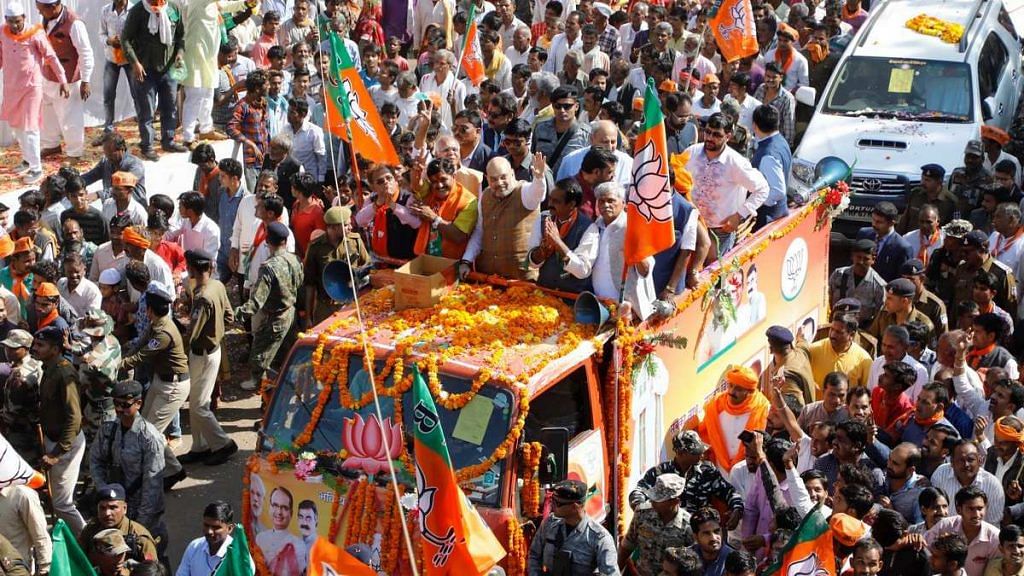There are no surprises what the television news channels all over the country and the social media will be discussing since this evening — the exit polls. Predictions based on surveys conducted by several agencies during the 2019 Lok Sabha elections will be out, keeping viewers trapped in anticipation over which party, or coalition, will form the next government — but most importantly, who will be India’s next prime minister.
But not all exit polls will tell the picture that will emerge four days from now, on 23 May, and it could be that none of them would. In case the exit polls settle over a fractured mandate, there is no limit to the various scenarios that would be speculated about: a BJP-led NDA government with someone other than Narendra Modi as the Prime Minister; a Congress-led UPA in power with a ‘mahagathbandhan’ face in the top job.
Exit polls in 2014 and prior
My own sense is that most of the exit polls are likely to be uniform in their predictions as was the case during the Lok Sabha elections in 2014, 2009, and 2004. Previous polls have hardly indicated very different outcomes. This evening, I expect all exit polls to predict the BJP as the single largest party in the 2019 elections.
The only thing that remains to be seen then is whether the exit polls of 2019 will be similar to the one in 2014 or 2004 — on both occasions, almost all surveys had predicted the BJP as the party with maximum seats. What’s important to note, however, is how the predictions of a comfortable victory for the BJP in 2004 elections had turned out to be wrong. The Congress was projected as a runner-up to the BJP but when the results were out, it was the other way around.
Also read: Why media ground reports, opinion & exit polls don’t agree with each other on elections
The AC Nielsen poll had predicted 190-210 seats for the BJP and 95-105 seats for the Congress in the 2004 elections. But we finally had a fractured mandate, with the Congress emerging as the single largest party with 145 seats while the BJP fell behind by seven seats, ending up with 138. The average of all exit polls for the BJP-led NDA that year was 255 seats — the NDA won 187 seats. The average for the Congress-led UPA was 183 seats — it won 219 seats. And thus, it was the Congress, and not the BJP as the exit polls had suggested, that formed the government.
Alternatively, the exit polls this evening could be similar to the 2014 elections, when most polls had predicted the winner right — the BJP — but very few managed to assess the extent of the BJP’s victory.
I am reasonably confident that there would be far more coherence and consensus among the various exit polls. I think most would give maximum seats to the BJP; the difference will be only about the numbers. Some exit polls may predict exact numbers for each party; some will give a range, which could be higher in some cases in what would be ‘playing safe’.
Beyond just ‘sample size’
For me, the real question would be: can some exit polls, if not all, pass the test of how exit polls should be conducted? Or will they remain mere estimates? How seriously can these numbers be taken?
But it’s also true that neither the numbers predicted by the exit polls can be rejected outright nor can they all be accepted without a pinch of salt. Just like there are good doctors and some not-so-good doctors. But what remains common between the two is the how they both cover the basics. The exit polls should at the very least give the viewers an estimate of the vote share. When the predictions are released soon as the voting gets over, it is assumed that voters have been interviewed and asked question about which party or candidate they voted for — this is done to arrive at an estimate of vote share, which is then converted into number of seats for a party or candidate. This is what the method suggests— and this is how the exit polls should be conducted, in case they aren’t.
Also read: Exit polls were spot on when Telangana, Rajasthan, MP, Mizoram & Chhattisgarh last voted
I sincerely believe that some details about how the numbers have been arrived at, and not just the sample size (the number of people interviewed), would equip the viewers to judge the reliability, if not necessarily the accuracy, of these exit polls. It is reasonable to expect the agencies conducting the surveys and TV channels releasing the figures to give viewers the vote share estimates — and then some more details if possible.
Sadly, the viewers are not likely to learn how the numbers of the exit polls have been arrived at, but they might witness competitions between various channels about whose ‘sample size’ is bigger than the rest. At least one news channel has already advertised that its sample size is going to be more than seven lakhs. Viewers should not be surprised if another news channel comes out claiming to have conducted its exit poll on a ‘bigger sample size’. Only by looking at sample size can we conclude with certainty that the agencies have conducted a reliable exit poll.
The author is a professor and director of Centre for the Study of Developing Societies (CSDS). Views are personal.
